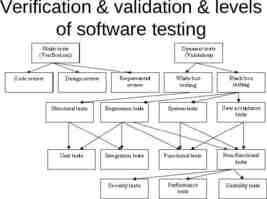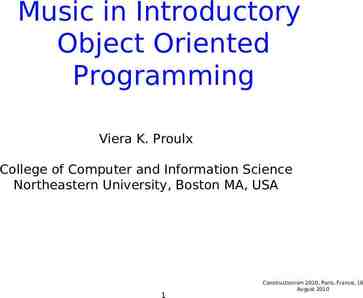Applications of Nanotechnology to Medicine December 2014
28 Slides1.92 MB
Applications of Nanotechnology to Medicine December 2014
Areas of impact Drug delivery and new therapies Diagnostic analyses Biological research
Drug Delivery
Nanoscience, translation, clinic http://lapotko.rice.edu
Commercial Nanotherapeutics Source: Nanotechnology research directions for societal needs in 2020
Action of anticancer nanoparticle Nanoparticle therapeutics: an emerging treatment modality for cancer, M. E. Davis, Z. Chen and D. M. Shin, Nature Reviews: Drug discovery 7, 771 (2008).
Nanoparticle drug delivery (possible uses) Cancer therapy,antifungal,antiemetic, cholesterol control (previous slide) MRI contrast agents Radioactivity imaging agents Osteoporosis drugs Antibacterial or antiviral delivery
Drug delivery advantages Can excite minimal immune responses.
m-RNA for IFN- Immune response to Au-DNA Cell type: RAW 264.7 M. D. Massich, D. A. Giljohann, D. S. Seferos, L. E. Ludlow, C. M. Horvath, and C. A. Mirkin, Regulating Immune Response Using Polyvalent Nucleic Acid-Gold Nanoparticle Conjugates, Molecular Pharmaceutics 6 1934 (2009).
Drug delivery advantages Can excite minimal immune responses. Can carry a large payload.
Au delivery of Pt anticancer drug S. Dhar, W. L. Daniel, D. A. Giljohann, C. A. Mirkin, and S. J. Lippard, Polyvalent Oligonucleotide Gold Nanoparticle Conjugates as Delivery Vehicles for Platinum(IV) Warheads, J. Am. Chem. Soc. 131, 14652 (2009).
The Pt oxidation state matters Pt(IV) complexes are reduced in the intracellular milieu to yield the cytotoxic Pt(II) species through reductive elimination of axial ligands.
Drug delivery advantages Can excite minimal immune responses. Can carry a large payload. Can carry multiple binding ligands.
Nanoparticles hold multiple ligands Nanoparticle therapeutics: an emerging treatment modality for cancer, M. E. Davis, Z. Chen and D. M. Shin, Nature Reviews: Drug discovery 7, 771 (2008).
Drug delivery advantages Can excite minimal immune responses. Can carry a large payload. Can carry multiple binding ligands. Can carry multiple different drugs.
Overcoming evolution Both bacteria and cancer cells evolve defenses against therapeutic agents. These defenses can be attacked by same nanoparticle that carrys the cell killer.
Drug delivery advantages Can excite minimal immune responses. Can carry a large payload. Can carry multiple binding ligands. Can carry multiple different drugs. Can maintain drug concentrations longer.
CPT conc. ( g/ml) 10 1 10 0 10 -1 10 -2 10 -3 Decay profiles 0 20 40 60 80 100 time (hours) T. Schluep, J, Cheng, K. T. Khin, M. E. Davis, Cancer Chemother Pharmacol (2006) 57: 654. (redrawn)
Drug delivery advantages Can excite minimal immune responses. Can carry a large payload. Can carry multiple binding ligands. Can carry multiple different drugs. Can maintain drug concentrations longer. Typically they enter by endocytosis, which can bypass some resistance mechanisms.
TEM of nanoparticles entering cell through endocytosis Nanoparticle therapeutics: an emerging treatment modality for cancer, M. E. Davis, Z. Chen and D. M. Shin, Nature Reviews: Drug discovery 7, 771 (2008).
Au nanoshells tune absorption N. Halas, Rice University website
Cancer phototherapy Use a near-IR laser to heat gold nanoshells and destroy the cancer cell (N. J. Halas, J. L. West). Use a pulsed near-IR laser to explode a cluster of gold nanoshells and destroy the cancer cell (D. O. Lapotko).
Laser pulse gold Plasmonic Nanobubble On-demand non-stationary transient event, not a particle Dmitri Lapotko http://lapotko.rice.edu
Mitigating Oxygen Radical Damage When blood flow has been temporarily stopped by a clot as in stroke, affected cells retreat into a new state. When blood flow is restored, the flood of O2 creates harmful cell killing radicals. A group headed by James Tour has developed an oxygen radical destroying drug therapy.
Longitudinal Unzipping of CNTs to Form Graphene Nanoribbons (GNRs)
These carbon ribbons are chemically linked to polyethylene glycol (PEG) making them water (and blood) soluble. The result is called PEGCNP, where CNP stands for carbon nanoparticle. Injected into the blood along with clot busting drugs, the PEG-CNP greatly reduces oxygen radical damage to cells cut off by the clot.
Diagnostic Analyses
Non-invasive rapid malaria diagnosis E. Y. Lukianova-Hleb, .,Dmitri Lapotka, Proceedings of the National Academy of Sciences, 111 900-905 (2014)

































